© ROOT-NATION.com - Use of content is permitted with a backlink.
Speed, armor, or rate of fire — what matters most in modern warfare? Lieutenant Colonel Serhii Misiura set out to compare two of the top infantry fighting vehicles in service today: the American M2 Bradley, used by the 47th Brigade, and the Swedish CV90, deployed by the 21st Brigade. These two armored vehicles will go head-to-head in tests of speed, rate of fire, accuracy, and troop dismount time. Soldiers will also evaluate their armor, weapon systems, and other key technical characteristics.
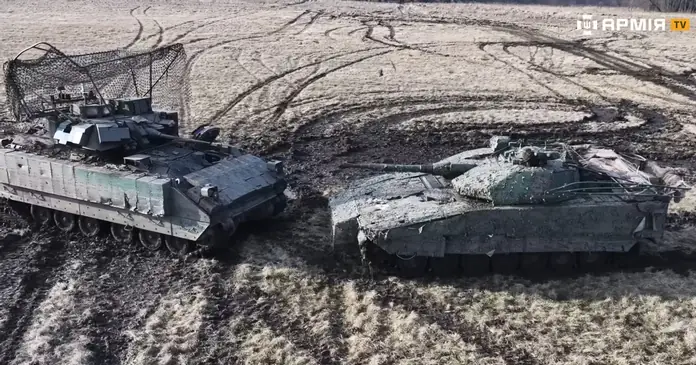
Read also: Multi-role Fighter Mirage 2000-5 for the Ukrainian Air Force: Understanding What This Aircraft Is
Specifications
CV90
The CV90 (Combat Vehicle 90) is a family of Swedish infantry fighting vehicles (IFVs). Development of the CV90 began in 1984 by Hägglunds—now a subsidiary of British defense giant BAE Systems—under a contract from the Swedish Army to create a unified platform for a range of combat vehicles. Serial production started in 1993, and to date, around 1,400 units have been produced in various configurations, with the majority exported to other countries. In addition to several IFV variants, the CV90 platform has served as the basis for a number of specialized armored combat vehicles, including a light tank equipped with a 120 mm smoothbore gun.

The hull and turret of the CV90 are constructed from rolled steel armor plates using a spaced armor configuration. To enhance the vehicle’s protection, modular add-on composite armor from various manufacturers can be installed in addition to the base armor. The CV90 can also be equipped with active protection systems (APS) to further increase survivability on the battlefield.
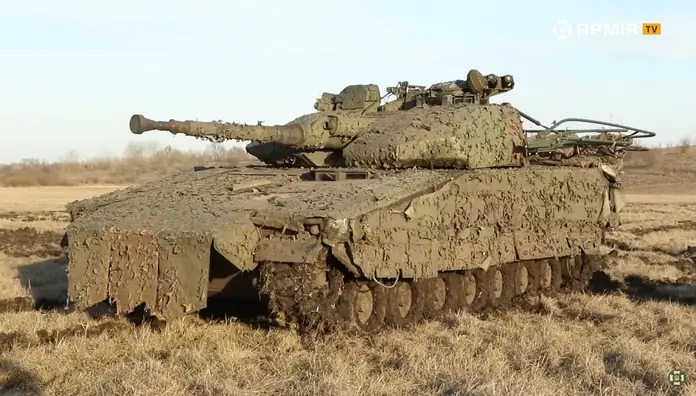
The base armor of the CV9040 provides all-around protection against 14.5 mm armor-piercing ammunition. The exact specifications of frontal armor protection remain classified, but all models from the CV9040B onward are reported to be resistant to 30 mm APFSDS rounds. Certain variants, such as the CV9030N, can be equipped with MEXAS — a ceramic applique armor system that enhances protection against 30 mm rounds. This armor kit is specifically designed to improve resistance to improvised explosive devices (IEDs), shaped charges, and armor-piercing shells of 30 mm caliber. All CV90s feature internal spall liners that cover the interior of the vehicle, protecting personnel inside from shrapnel and anti-personnel artillery munitions.
M2 Bradley
The M2 Bradley is the primary infantry fighting vehicle (IFV) used by the mechanized forces of the U.S. Army. It is designed to transport infantry squads to the battlefield, allow them to fight from within the vehicle, and provide fire support both during and after dismounting.
The Bradley infantry fighting vehicle features a conventional layout typical for this class, with the engine and transmission compartment (powerpack) positioned at the front. The powerpack is offset to the right side of the vehicle, while the driver’s seat is located to the left. The driver’s hatch opens backward and can be secured in the open position during movement. For visibility, the driver relies on four periscopic viewing blocks for forward and left-side observation. However, right-side visibility is limited when the hatch is closed, as the engine deck obstructs the view.
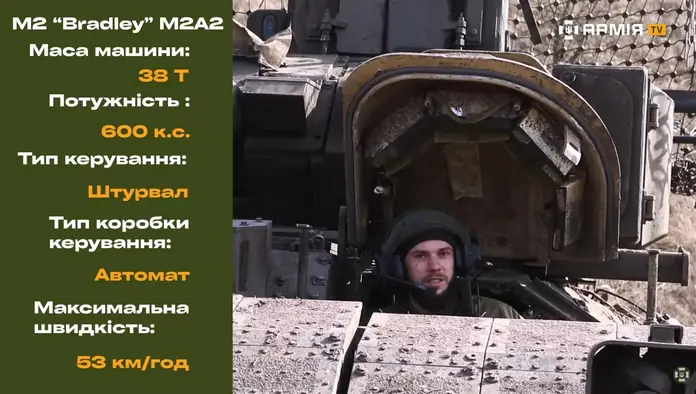
The central section of the Bradley’s hull houses a two-man turret, slightly offset to the right. Inside the turret, the gunner is positioned on the left, while the commander is seated on the right. Both positions are equipped with individual hatches. The commander’s hatch is surrounded by seven periscopic viewing blocks, and the gunner’s hatch has three. The turret includes a suspended floor, and the fighting compartment is separated from the troop compartment by a partition with a passageway.
The vehicle can carry six infantry personnel. Two are seated on the left side behind the driver, two more on the right side behind the turret, and another two are positioned near the rear ramp. The rear ramp, which is hydraulically operated, is used for combat dismounting. Under normal conditions, troops enter and exit through a door built into the left side of the ramp. Additionally, there is a roof hatch in the troop compartment that opens backward.
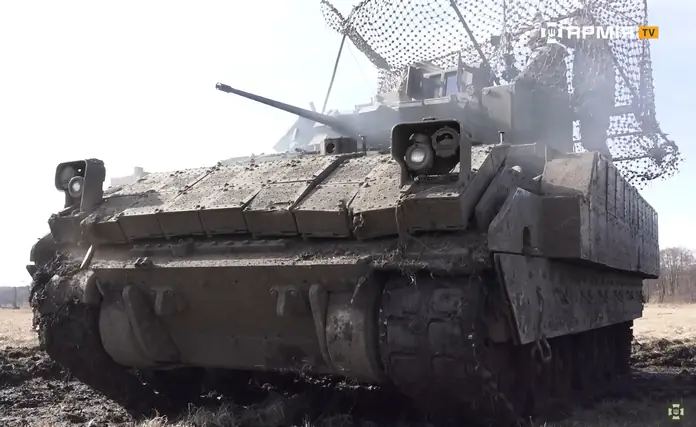
The hull and turret of the M2 Bradley are welded from sheets of aluminum alloy, which is alloyed with manganese, chromium, magnesium, and zinc. The front and sides feature a “sandwich” construction designed for the XM723, offering adequate protection against small-caliber gunfire. The bottom of the vehicle is reinforced with steel plates to protect against mines. Additional protection in the front is provided by a retractable wave-deflecting shield. The suspension system is shielded by armored screens, the lower part of which can be raised on hinges to facilitate maintenance.
Read also: Weapons of Ukrainian victory: Boxer RCT 30 infantry fighting vehicle
Armament
CV90
The base Swedish CV90 is equipped with a two-man turret armed with a Bofors 40/70B automatic cannon and a paired 7.62 mm machine gun. The CV90 also features six 76 mm grenade launchers, arranged in two clusters of three launchers on each side of the turret. These grenade launchers are primarily designed for smoke grenades but can also be loaded with various types of combat grenades.
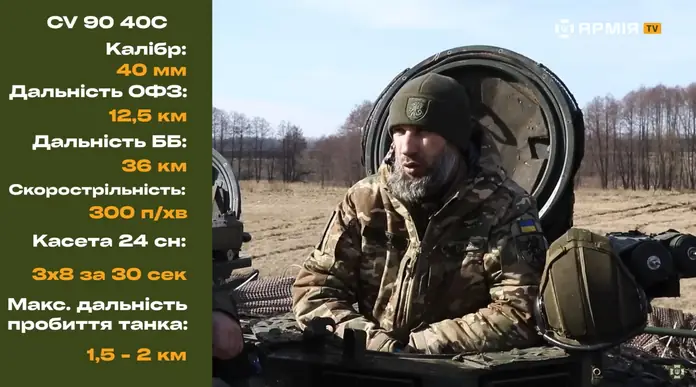
Export variants of the CV90 are equipped with Hägglunds E-series turrets, with over 600 E30 turrets (fitted with a 30 mm Bushmaster II automatic cannon) and E35 turrets (with a 35 mm Bushmaster III automatic cannon) supplied. BAE Systems Australia presented a proposal for phase 3 of the LAND 400 program — the CV9035 with the E35 turret. This system offers a high degree of standardization with BAE Systems’ phase 2 LAND 400 proposal, the AMV35, by using the same E35 turret system.
M2 Bradley
The main armament of the BMP consists of a 25 mm M242 automatic cannon with an external drive for the automatic mechanism and a dual-belt feeding system, which allows for quick switching between different types of ammunition. The cannon’s ammunition load includes 900 rounds, 300 of which (typically 225 high-explosive fragmentation and 75 armor-piercing) are loaded and stored in the turret, while the remaining 600 rounds are kept in the hull’s ammunition storage. The cannon supports three standard firing modes — single shots or bursts with a firing rate of 100 and 200 rounds per minute. The maximum technical rate of fire is 500 rounds per minute.
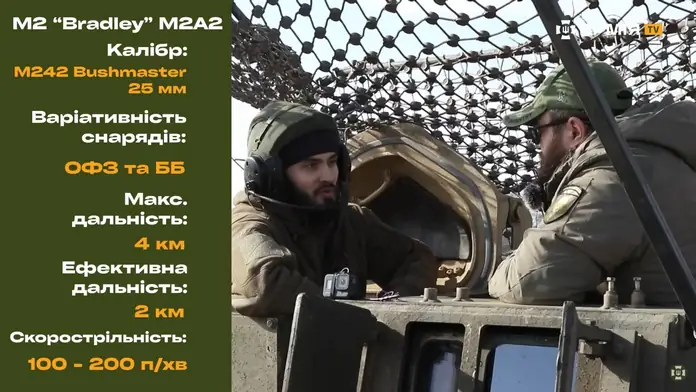
The armor-piercing subcaliber shell M791, weighing 137 g, has an initial velocity of 1335 m/s and can penetrate homogeneous steel armor 66 mm thick at a distance of 1000 m. At a range of 2500 m, it is capable of penetrating the armor of the BMP-1. The ammunition load also includes the M792 round, which features a high-explosive fragmentation tracer projectile. For training purposes, the M793 round with a practice projectile is used.
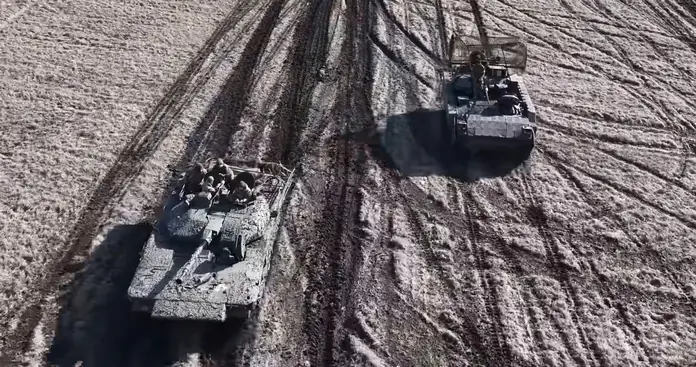
The cannon is paired with a 7.62 mm M240C machine gun, with a total ammunition load of 2,340 rounds. Of these, 800 rounds are loaded into belts and stored in the turret’s magazine boxes, while the rest are kept in the hull. For anti-tank combat, a two-round launcher for the BGM-71 TOW anti-tank guided missile (ATGM) is mounted on the left side of the turret, covered by an armored shield. The TOW missile features a 127 mm shaped-charge warhead, with penetration capabilities of 630 mm (BGM-71C) or 900 mm (BGM-71D), a flight speed of 278 m/s, and a range of 65 to 3750 meters.
The aiming system is semi-automatic, with commands transmitted via a two-wire cable. After launching the ATGM, the operator must maintain the targeting reticle on the target, meaning the missile can only be fired once the vehicle has stopped. In the traveling position, the launcher is pressed against the side and covered by an armored shield at the front. In combat, it is raised to a horizontal position via an electric drive. The launcher has a vertical elevation range of −20° to +30°. The reloading process is manual, carried out through the upper hatch of the troop compartment. The military ammunition load consists of 7 BGM-71 ATGMs (2 on the launcher and 5 in the troop compartment storage).
Read also: Weapons of Ukrainan Victory: KF 41 Lynx Infantry Fighting Vehicle
Testing
During the initial speed tests, the CV90 had the advantage. However, it’s important to consider the weight difference—the Bradley is 5.5 tons heavier, which likely had an impact. Additionally, the CV90 is equipped with ground traction, whereas the Bradley lacks this feature. Further testing was conducted to evaluate the accuracy of the shots, where the CV90 proved to be more precise, faster to target, and able to destroy its target more effectively. As for ease of entry and exit, the soldiers demonstrated the convenience and comfort of entering the troop compartment, starting with the CV90. However, they noted that the Bradley offered a more comfortable, faster, and more efficient process for boarding and disembarking.
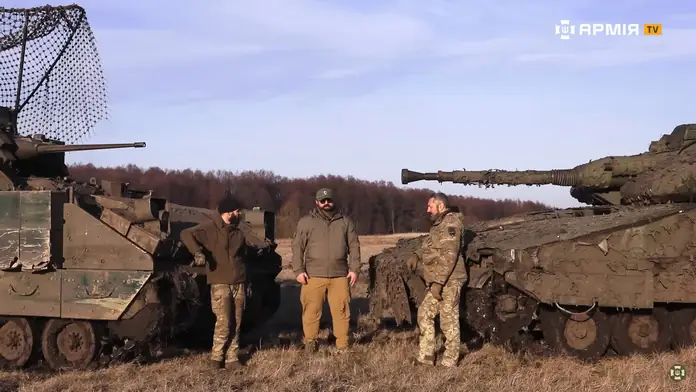
Regarding tactical features, the soldiers noted that the Bradley BMP had superior systems. It is equipped with a night camera and thermal imaging for the driver, while the CV90 only has a night camera and analog voice control.
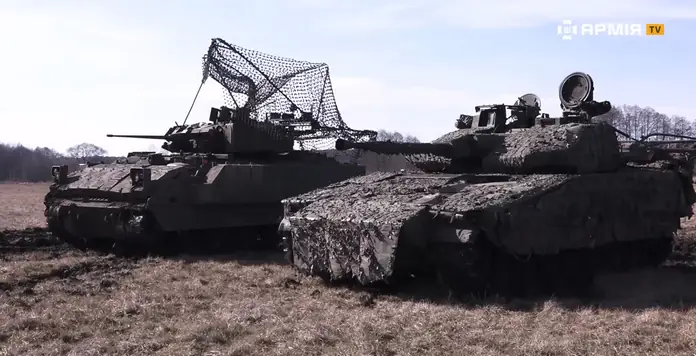
Regarding the use of the BMPs, the Bradley successfully withstands detonations from anti-tank mines. In contrast, the CV90 can handle one or two such mines without crew or dismount casualties, but it loses mobility. This is achieved without dynamic protection. Meanwhile, the Bradley BMP with dynamic protection handles mine blasts, FPV (First Person View) drones, and ATGMs (Anti-Tank Guided Missiles) significantly better.

Regarding night signatures, a significant advantage of the CV90 is the presence of a thermal camouflage cover – the Barracuda system, named after the Swedish company Barracuda Company, which developed it. When used, the signature of an individual infantryman is more visible than that of the vehicle itself.

Read also: Weapons of Ukrainian Victory: LAV 6.0 ACSV Armored Personnel Carrier
Conclusions
In conclusion, both vehicles have a number of advantages that the commanders of the Bradley and CV90 would gladly “swap” with each other. For instance, swapping the guns, while maintaining the rate of fire in the Bradley, or borrowing dynamic protection to cover the front of the CV90. “But we know that in the end, they remain the best with all their pros and cons. The most important thing is that we have the best people defending our country,” summed up Mr. Misura.

For the information provided, we would like to thank the military television channel Army TV.

Read also:

